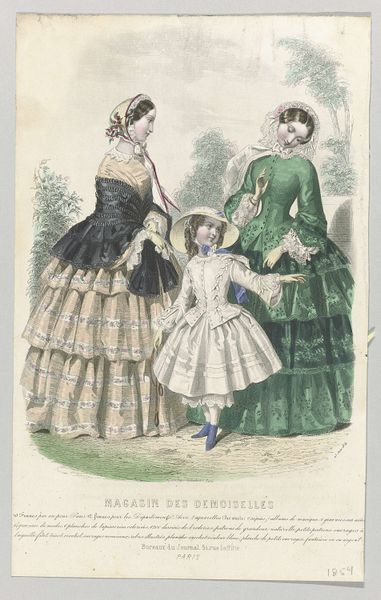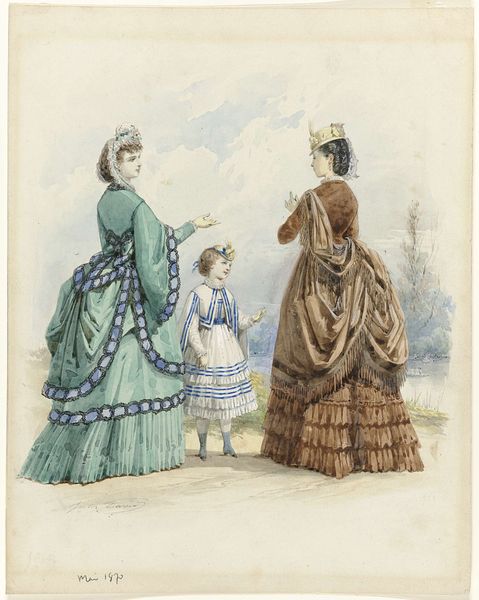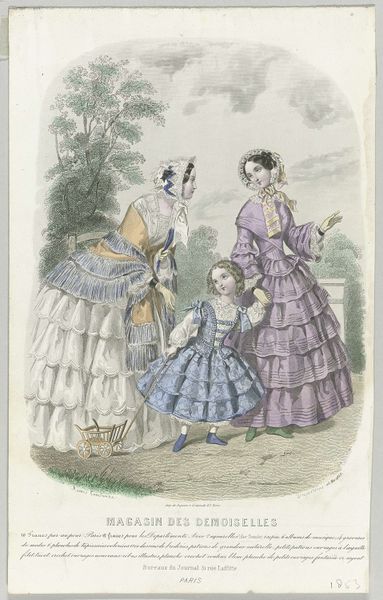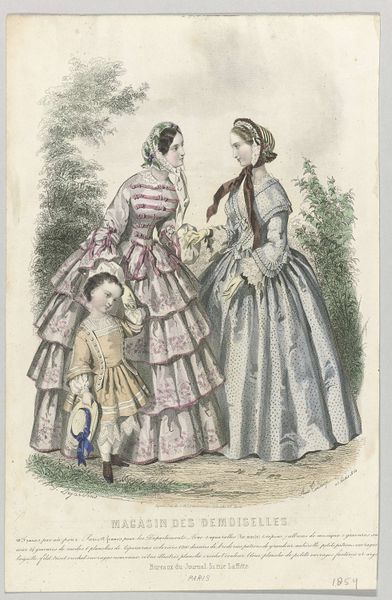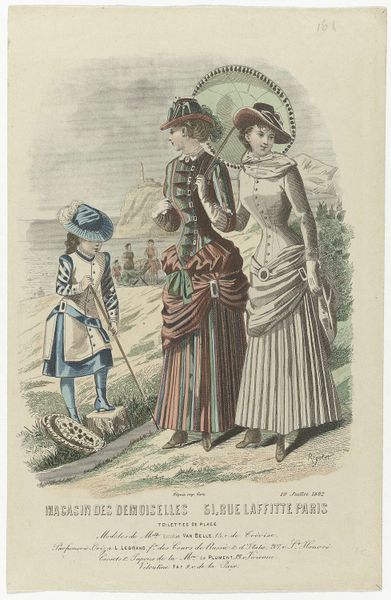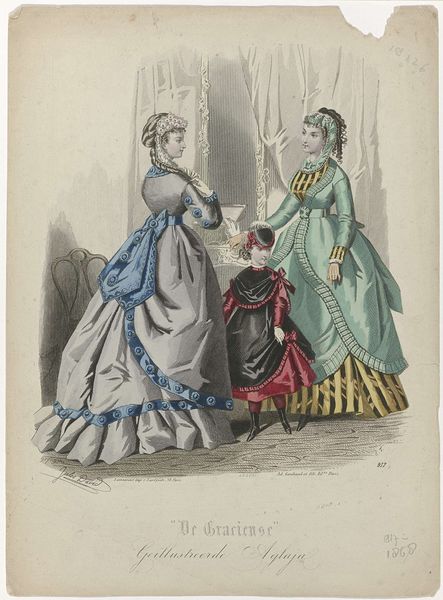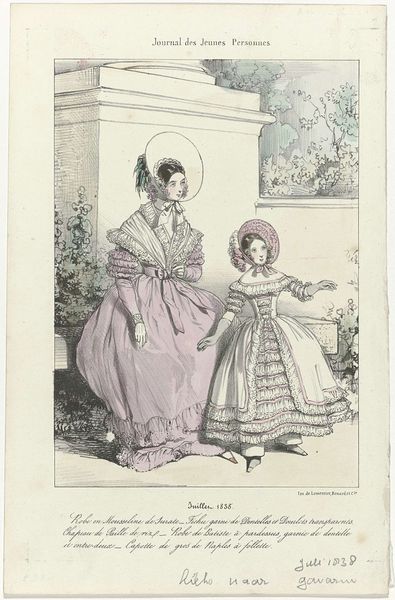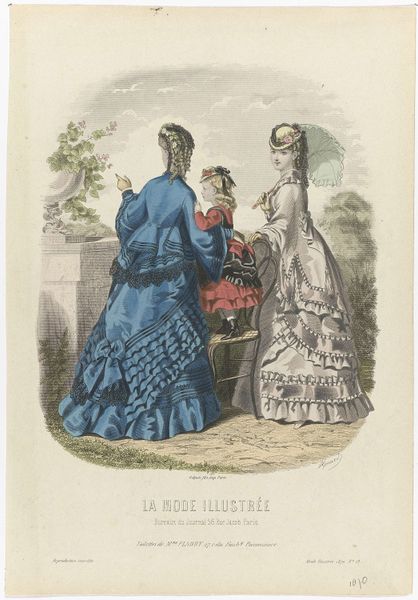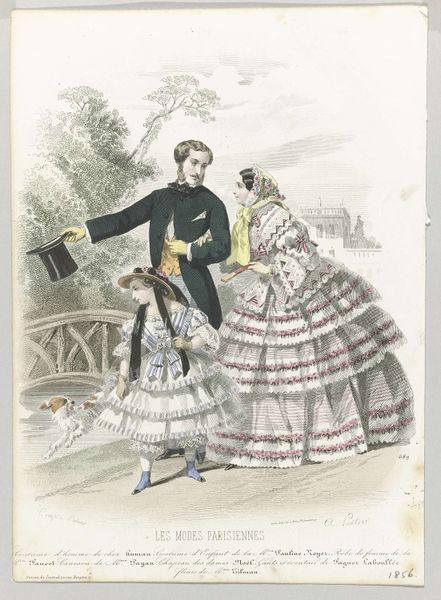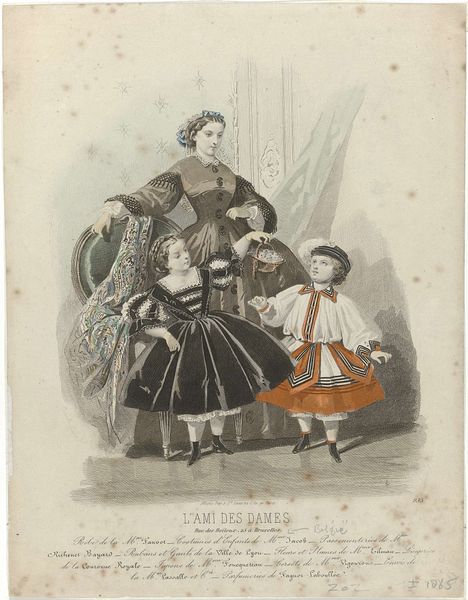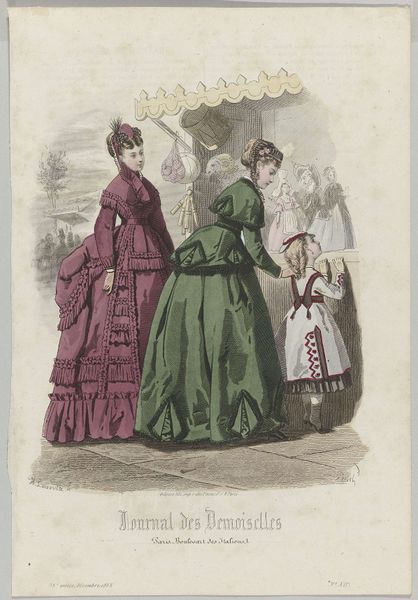
drawing, coloured-pencil, print
#
drawing
#
coloured-pencil
# print
#
figuration
#
coloured pencil
#
watercolour illustration
#
genre-painting
Dimensions: height 202 mm, width 144 mm
Copyright: Rijks Museum: Open Domain
Curator: Let's examine "Cendrillon, ca. 1871, No. 34: Journal des petites Demoiselles..." by P. Deferneville, which appears to be a coloured-pencil print. My first impression is that the artist skillfully captured the texture of the textiles, giving the garments a tangible presence. What strikes you initially? Editor: Immediately, the pronounced tiers of the dress on the right grab my attention. It reminds me of cake frosting, layer upon layer. It definitely speaks to the luxurious materiality and construction involved in creating such elaborate fashions. Curator: Absolutely, and we must consider that these images were printed in journals geared towards young women, instructing them on the virtues and importance of refined, bourgeois fashion during that time. What statement do you think those constructed identities made? Editor: These materials and their making certainly embody the labor and consumption of the upper class, particularly in Paris, then a hub of industry. Notice how each ruffle, each seam would have required specialized labor. The print serves almost as a catalogue of skills and social class, made attainable to consumers. Curator: Precisely. Fashion became a way to express cultural values. How did class affect someone's personal value in this particular context? Editor: Mass production and consumption during this era created aspirations, and also anxieties, to keep up with the trends. The print itself would have circulated widely, shaping desires, demanding production of cheaper imitations, but also accentuating that sense of unattainability for those outside the petite demoiselle circle. Curator: Exactly! This also emphasizes how the intersection of class and gender profoundly shaped women's roles and identities in the 19th century. Now, turning back to Deferneville’s methodology, what elements of this work speak of materiality? Editor: Look at the specific rendering of fabric in light and shadow. Deferneville painstakingly details lace trims, the heavy folds of fabric and also conveys texture, whether in smooth satin or fringed wool. And consider the labour that goes into each illustration replicated to a large scale... Curator: Agreed, this era allowed women the opportunities for growth, expression and entrepreneurship within limits. It is all encapsulated right here. Thanks, this was illuminating. Editor: Indeed. Exploring the creation and consumption through a tangible perspective definitely helped unlock greater understanding of that era’s complex and nuanced production.
Comments
No comments
Be the first to comment and join the conversation on the ultimate creative platform.
